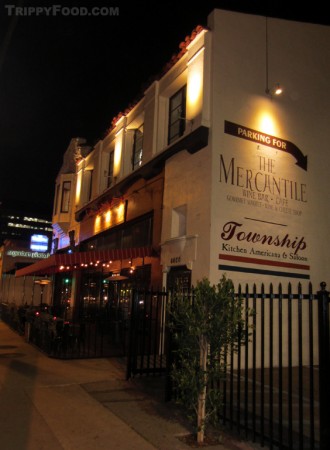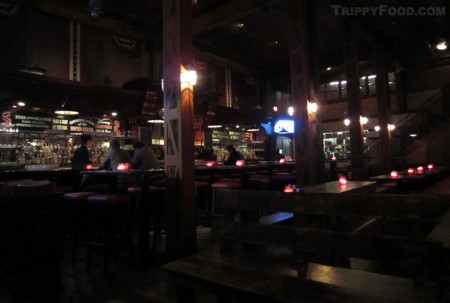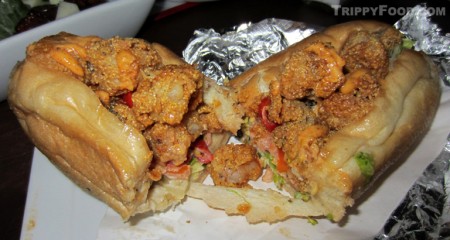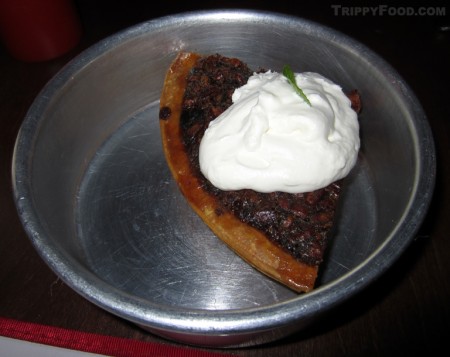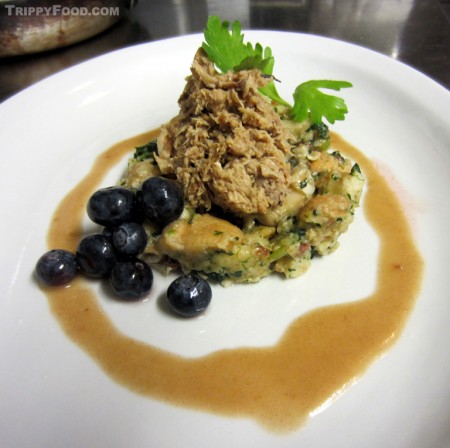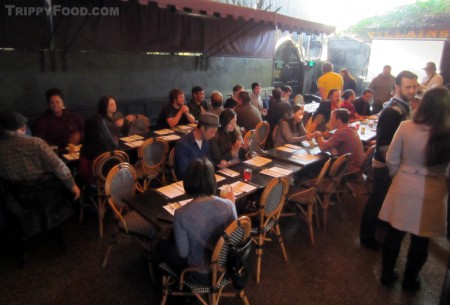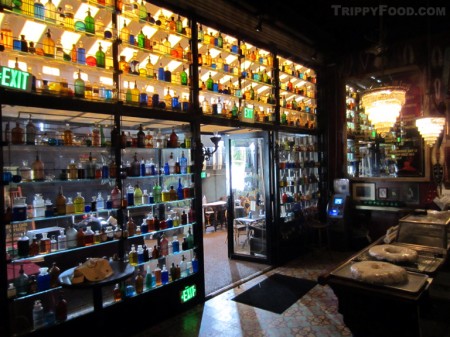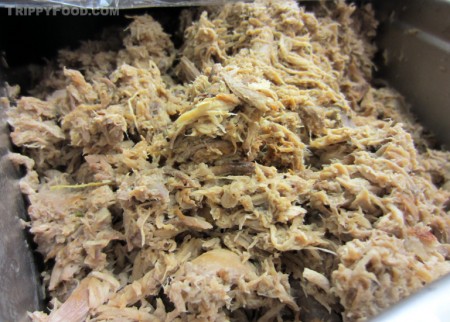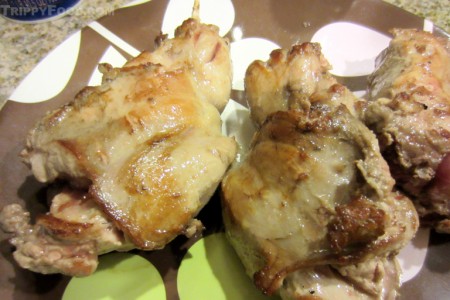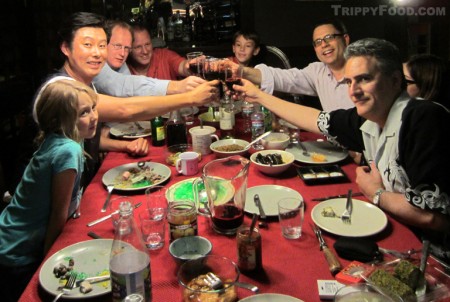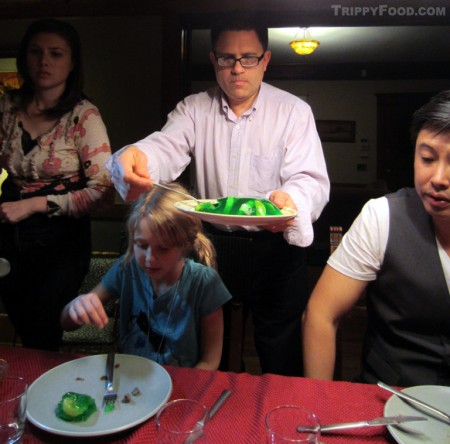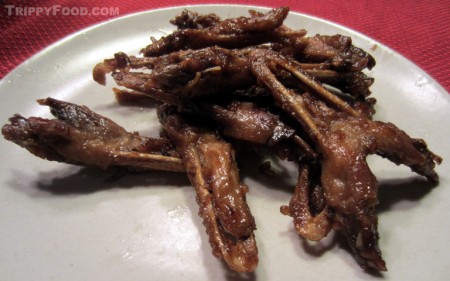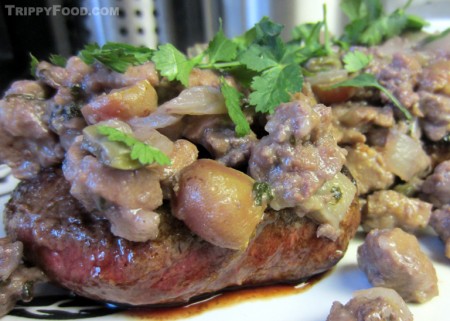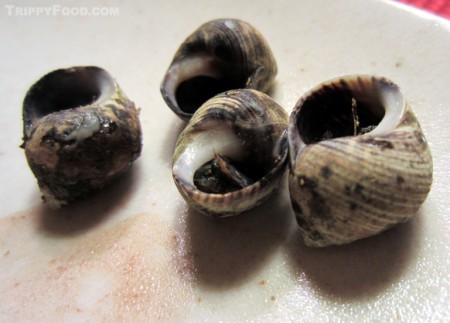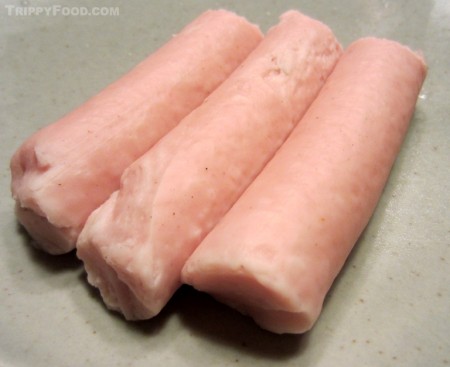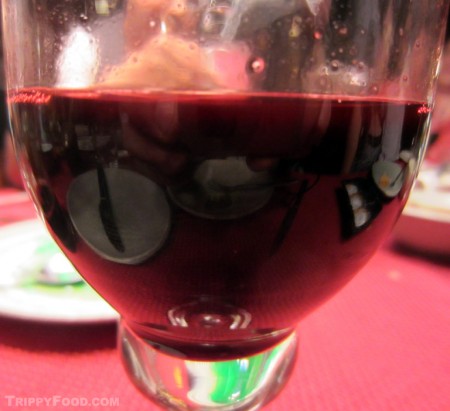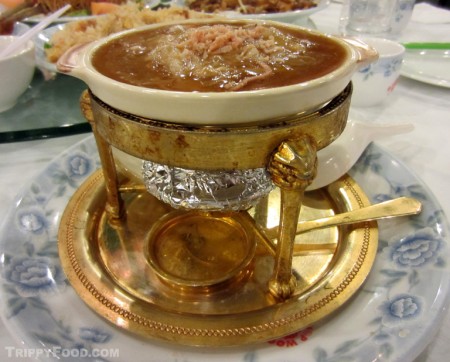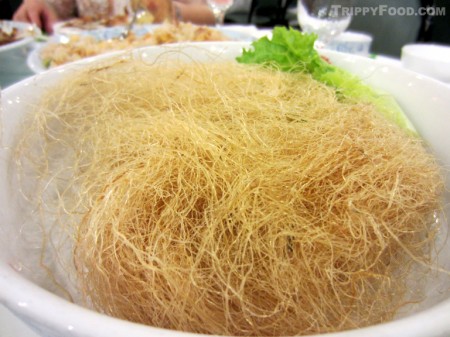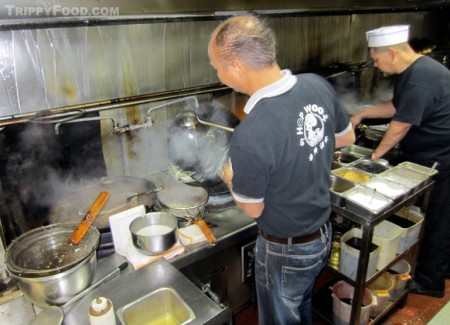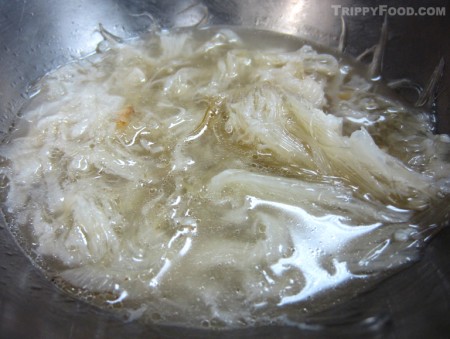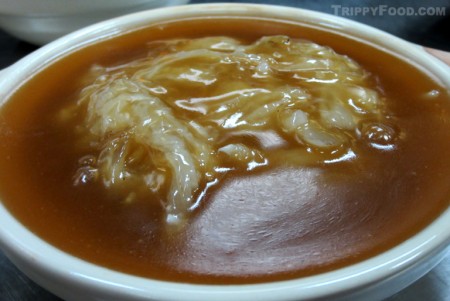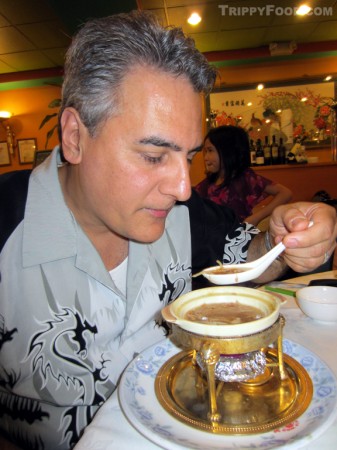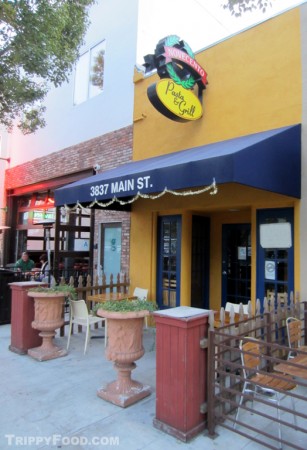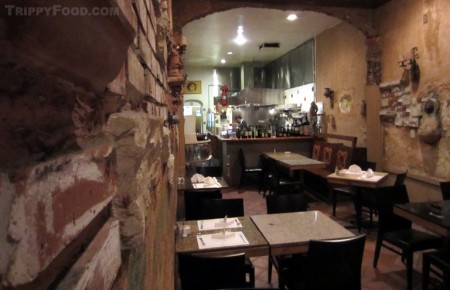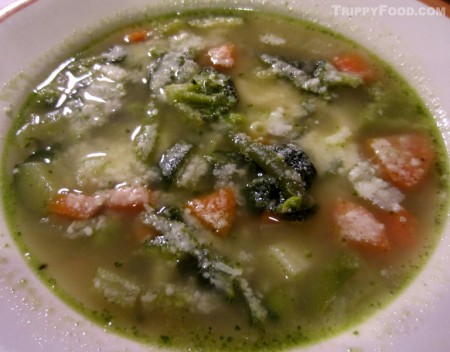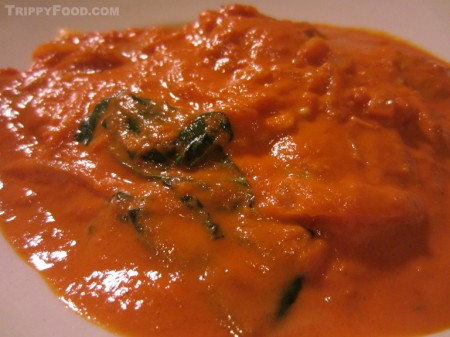Township Kitchen Americana and Saloon
Los Angeles, CA
I admit that my first reaction upon walking up to Township Kitchen Americana and Saloon in Hollywood was one of confusion; to the uninitiated, the name painted on the side of the antique-looking building suggests a western bar selling antique stoves. It strikes me that restaurant and bar impresario George Abou-Daoud (The Bowery, Delancey, Mission Cantina) could have gotten by inking only the watering hole’s popular first name and saving himself a couple of double eagles but I was already intrigued passing through the gold leaf-lettered swinging glass doors, a portal to another time. Township emerged from the gutted remains of Abou-Daoud’s District in late 2010, but after its elaborate facelift the grand dame bears more resemblance to a purveyor of victuals and libations from 1910. The only feature left from the original space is the classic red tin ceiling; all the fixtures appear to be carefully chosen to make you forget what year it was when you walked in, including a room’s length mahogany bar framed by hand-painted mirrors emblazoned with phrases such as, “Continental Cuisine of the Unites States” and “Featuring Territories Old & New”.
The first page of the menu (which looks fresh off a moveable type press) is well stocked with American whiskeys (including corn and rye), as well as craft beers. After slugging back a couple of their authentic hooches below one of the hanging tin-shaded lamps may make you cast a glance over your shoulder to prepare a hasty getaway should Carrie Nation come in to bust the place up with an axe. Of course, those of us who drove up at 88 miles-per-hour in our Deloreans still have modern cocktalian fare to choose from (although you may enjoy ordering rustic-sounding beverages like “Lynchburg Lemonade”, “New York Egg Cream” or “Southern Sweet Tea”, feisty potations that will put a breeze in your bloomers).
The incredibly high ceiling gives the space an open look, but even with the room full conversation wasn’t drowned out by the rabble. Our group of 5 (including friends and writers Arianna Armstrong and Vivianne Lapointe) was comfortable at one of the throwback wooden benches, and although I’m not a big fan of dimly lit establishments as I prefer to clearly see what I’m about to eat, the subtle lighting lent itself well to the period decor. The piped in music nodded to alternative early on but gradually switched over to appease the drinking crowd – cabaret, Dixieland or even steampunk might have been more suitable to the theme. There’s nothing crazy on the menu, although Township does a fine job in pulling in dishes from around the country and executing them with their own flair; from Yankee port roast to lowcountry shrimp and grits, all bases are covered.
At Vivianne’s suggestion, I ordered the shrimp and oyster po’ boy, and while probably not what you’d expect to arrive when ordered in a Gulf Coast shack, massive chunks of cornmeal battered shellfish burst out of a sub roll in an inviting display. The sandwich was punctuated by a collusion of crisp, pickled red and green chiles and a couple of squirts of rather ominous-looking orange aioli. Oysters and shrimp in general are susceptible to over cooking and are two commonly used seafood items that can emanate that certain funk factor, but both were fresh, perfectly fried and mellowly flavorful; what caught me off guard was the capsaicin-laden accoutrements that set the back of my mouth ablaze like a Louisiana refinery fire. Despite the heat and though the sandwich may not have been authentic, it was delicious to be sure.
I ended the meal with a cup of coffee from Abou-Daoud’s equally-rustic adjacent Mercantile wine bar and took the advice of our waiter, ordering a generous wedge of pecan pie whipped up from his mother’s recipe (developed when they lived in Texas). Sweet desserts are a turn-off to me, but the pie wasn’t the familiar sticky, viscous and sugary confection I usually encounter in even the finer pie shops; the flavor of the pecans were the star of the dish, so good that we made short work of it by attacking it with our phalanx of spoons.
The food is fresh and delicious at Township, and while there isn’t any new ground being broken in designing the menu I regard that as a plus; the atmosphere, pseudo-historic decor and roundup of regional, traditional and homespun dishes is fresh take on an old theme that gives the feel of eating and drinking in a long-established tavern, an accomplishment deserving of a tip of the hat as you head on out into the sunset.
Township Kitchen Americana and Saloon
6612 Sunset Boulevard
Los Angeles, CA 90028
GPS Coordinates: 34° 5’52.16″N 118°20’0.64″W

